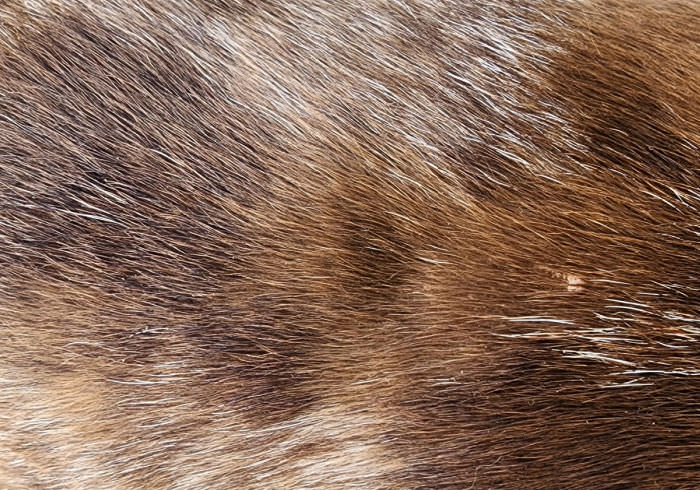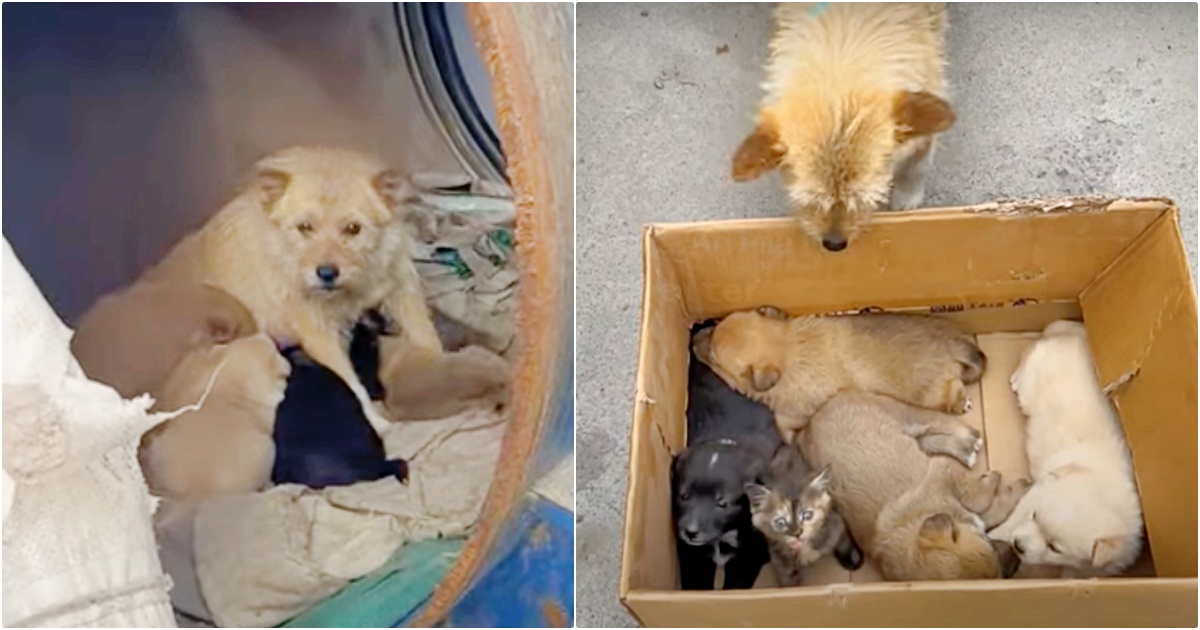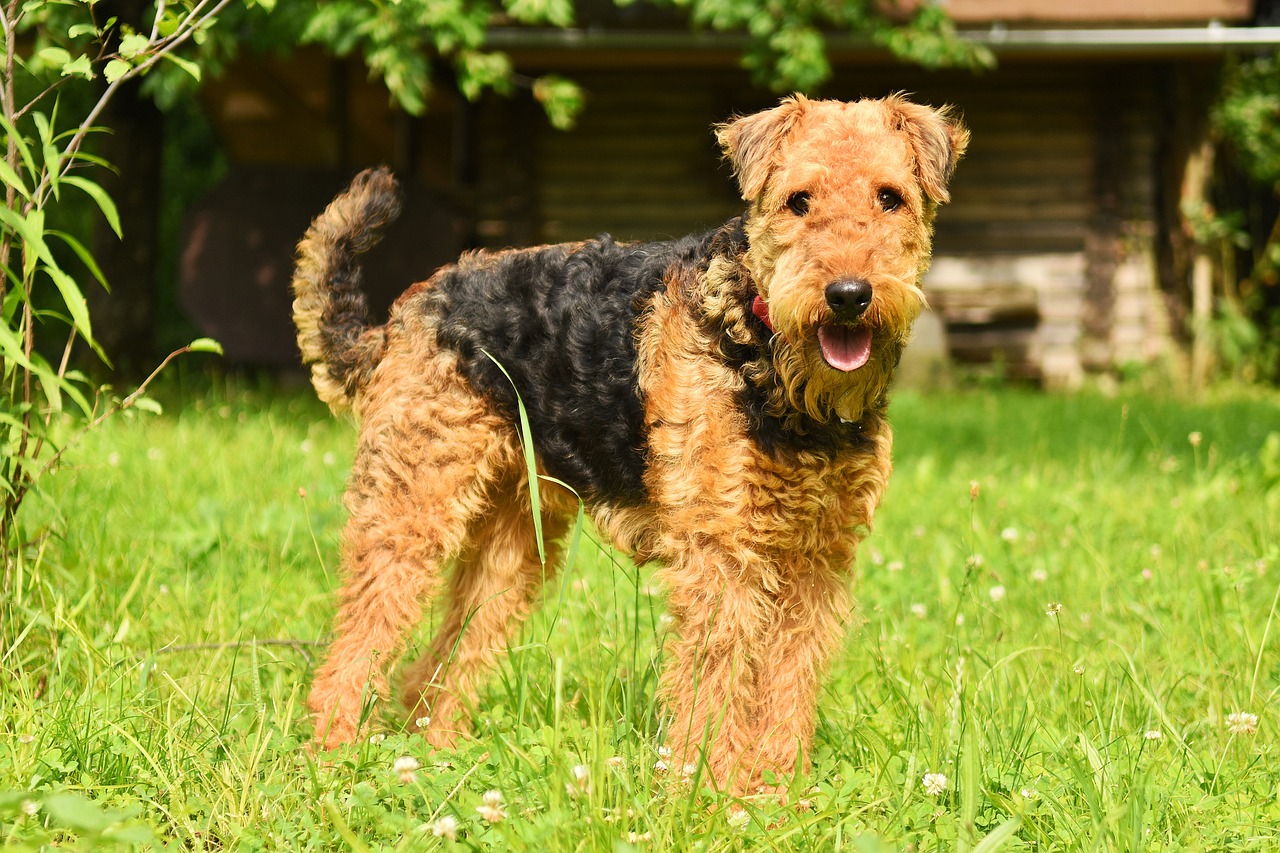My first experience with Dachshund skin issues was with Chester, my first Dachshund.
He was my first dog as an adult and I didn’t know how often I should give him a bath, so I just assumed he needed them frequently. I noticed that he always itched for a couple days afterwards and he often had dry, flaky skin, but I didn’t put two-and-two together for a while.
If you share your home with an itchy Dachshund, then you know how uncomfortable and frustrating skin problems can be for your dog…and how annoying the constant scratching can be.

While any dog can suffer from skin problems, Dachshunds are known for a couple specific issues. In fact, skin issues are one of the top health issues for Dachshunds.
Luckily, many of the things that might cause your doxie’s skin to be red, irritated, bumpy, or itchy can be treated, managed effectively, or prevented from developing at all.
The first thing you must do, is identify the cause. This means learning more about how skin issued might develop and how to reduce the possible triggers.
Signs and Symptoms of Skin Issues
If your Dachshund is experiencing a skin imbalance or irritation, at the minimum, they can feel “off” or uncomfortable. If the skin condition becomes more serious, it could start affecting your dog’s overall health and cause behavior issues like biting and aggression.
Signs and symptoms associated with the most common Dachshund skin problems include:
- Excessive itching and scratching
- Feeling easily irritated or agitated
- Trouble getting comfortable
- Dry skin
- Rashes
- Red bumps
- Sores or skin lesions
- Flaky skin (dandruff)
- Hair loss (either local or widespread)
It is normal for your Dachshund to scratch occasionally. We all need to scratch a random itch now and then.
However, if the itching is excessive and doesn’t seem to go away, it’s time to look a little closer.
The 3 Most Common Skin Problems in Dachshunds
I am not a veterinarian, but I’ve had experience with over 1,000 Dachshunds in the last 20 years, so I have spotted trends.
In my experience, these are the most common issues I see owners asking about.
1) Dry, Itchy Skin
It’s very common for Dachshunds to have some degree of dry, flaky skin.
Like with my experience with my first Dachshund, the most common cause I see is too much bathing.
Skin develops it’s own protective barrier, and produces natural oils to keep it moisturized. Bathing a Dachshund too frequently, even when a gentle shampoo is used, can remove the oils and compromise the skin barrier.
Another common cause of dry, flaky skin on a dog is allergies – either environmental (what is around them) or what they eat (food).
Dogs can be allergic to pollen, dust, grass, feathers, and flea saliva. They can absorb allergens through their skin or inhale them.
Other things that can cause your doxie’s skin to be dry, flaky, and itchy include sunburn or a more complicated disorder like Seborrhea.
What to do:
For a short-term solution, try distracting your dog to keep them from itching that area. You can also use a medical cone or a sweater to prevent them from being able to scratch that specific spot.
Next, try to identify the cause. I usually do this by a process of elimination if the condition seems mild.
Of course, if it’s a more severe case, you should take your dog to the vet right away and let them diagnose the condition and recommend treatment.
The first thing I do at home to help what is going with my dog’s skin is reflect on how many times I have given them a bath. If it’s more frequent than every 1-3 months, I reduce the frequency and see if that helps.
I also start adding an oil to their food that will help keep their skin moisturized from the inside out. My favorite omega oils to use are fish (salmon, polluck, sardine, etc.) or krill oils, but plant-derived alternatives like coconut, marine microalgae, and Camelina also work.
Next, I pay closer attention to when most of the itching occurs:
- Is it constant or primarily after going outside?
- Does it happen after my dog walks on or rolls around in the grass?
- Has my dog been exposed to any potentially irritating substances like fertilizer, rock salt, or de-icer?
- Are there any other patterns that I can identify?
If the itching occurs primarily on the paws, and you associate a flare-up with walking outside, you may want to consider protecting your dog’s feet with boots.
My final “home remedy” would be to switch my dog’s food and treats to eliminate all chicken and chicken byproducts (the most common allergen for dogs). It can take up to three months to see a change if this is the culprit.
Note: the next most common food allergen is beef, so you may want to eliminate both of these at the same time, or try beef next.
If your Dachshund’s still has dry, flaky, itchy skin, the next step should be a visit to your veterinarian.
He or she can examine your dog, help you figure out what is going on, and recommend a treatment like medicated shampoo, topical treatments, or medication.
2) Alopecia (hair loss)
Although I was able to get rid of my Dachshund’s itchy skin but bathing him less, changing his diet, and adding omega oils to his food, he has a bare chest for years.
There are two primary causes of baldness in dogs.
Color-dilution alopecia
Color alopecia is characterized by thinning hair or patches of baldness, typically on the back chest, or almost evenly all over the body.
It’s a genetic condition seen commonly in Dachshunds with diluted colors like blue (diluted black) and Isabella (diluted chocolate).
Pinnal Alopecia
Pinnal alopecia, or baldness on your dog’s ears, is a non-inflammatory hair loss disorder that affects the visible part of the outer ear. It’s most commonly seen in Dachshunds, and can be accompanied by darkened skin where the hair is missing.
It’s characterized by symmetrical hair loss on both ears, and it usually begins in the first year of life.
Luckily, the condition is mostly harmless and cosmetic. It is not known to cause any pain, itching, or other discomfort.
Hair breakage
This was the issue with my Dachshund. He wasn’t actually bald-bald. I could see the stubble of hair embedded in his skin (like a 5-o’clock shadow), but he had to visible hair growing from his skin.
Sudden hair breakage can be caused by things allergies, skin infections, demodicosis (mange), seasonal shedding, parasites, or hormones. If this is the cause, there are usually other signs besides just the hair loss/breakage.
His was ongoing though, and was present from when he was a puppy. He was my first dog, and I didn’t understand about canine nutrition, so I just thought that was the way that he was naturally. Then I had an ah-ha moment!
I switched his food from kibble to beef whole-prey raw and the hair grew back within 6 weeks! I couldn’t believe it. That’s when it clicked – his hair loss was caused by food allergies and/or poor nutrition!
A poor diet can trigger hair loss in dogs because the hair follicles need a constant supply of nutrients to stay anchored.
What do do:
If your Dachshund is bald, the skin is left vulnerable to skin infections requiring antibiotics.
Unfortunately, because color-dilution alopecia is genetic, it can’t be prevented. The best “defense” against it is to only get a dilute Dachshund from a reputable breeder who tests against the condition.
There is very little known about pinnal alopecia, including what causes it or how to prevent it.
For baldness in dogs, some veterinarians will suggest a daily dose of melatonin. While there isn’t much scientific proof that it causes hair to grow back, there is moderate anecdotal evidence. It definitely worked for my Dacshund Gretel when her hair started to thin.
Adding omega oils to the diet, and rubbing coconut oil on the the bald spots, can help keep the exposed skin moisturized and healthy.
If it looks like your dog is bald due to hair breakage, try changing their diet. While I will not claim that switching to raw dog food will fix the issue, it did work for my Dachshund. I am not 100% sure why, but I suspect he was allergic to something in typically kibble and wasn’t getting enough nutrients from it.
If you are concerned about your dog being bald, or it causes other issues, please discuss it with your veterinarian.
3) Yeast and bacterial infections
These two issues are most often a secondary problem, meaning that they occur because of another skin issue.
Yeast overgrowth
Some yeast on the skin is normal and doesn’t usually cause problems for healthy dogs. However, an overgrowth of yeast can cause a skin infection.
Yeast infections are most common in the ears, but they can be seen anywhere on your Dachshund’s body.
Symptoms of a yeast infection include unpleasant smells, rashes, thickening of the skin, or excess itching.
Bacterial Folliculitis
This skin infection occurs in the hair follicles, causing itchy bumps or scabs on your dog’s skin.
While these can be seen easily on a Dachshund with a short coat, it can be harder to spot the problem with wire-haired or long-haired dogs.
What to do
Generally, both of these will require medical attention to resolve.
It is possible that the yeast infection is caused by food-related Dachshund skin allergies, so you can try the suggestions regarding allergies in the sections above.
Yeast overgrowth can also be due to hormonal imbalances, reactions to diabetes, or trapped water in the ear canal or folds of the skin.
To treat the bacterial infection, your dog will require medical treatment. This could include oral antibiotics, antibacterial shampoos, or topical ointments.
When Do My Dachshund’s Skin Problems Require a Veterinarian?
Some conditions can be addressed at home if your dog’s skin conditions can be described as mild discomfort or irritation.
You can try the suggestions above for removing the source of irritation and identify it first.
If your dog’s irritated skin isn’t getting better, or if it’s getting worse, it’s time to seek professional help.
Your veterinarian may be able to offer medications that will provide immediate relief while they work to address the root cause of the problem.
This is especially important if you notice any open wounds or abrasions that could get infected.
The earlier you find the cause of your Dachshund’s skin problems, the faster you can address any serious problems and give your dog relief.
Final Thoughts
Many common Dachshund skin problems, if they are mild, can be prevented with a little preparation or addressed at home.
Make sure to keep your dog’s skin barrier healthy and moisturized by feeding your dog omega oils and applying coconut oil topically when needed.
Try to identify any allergies that your dog may have to something in the environment or something that they are eating.
If you do suspect food allergies, switch to a limited ingredient diet with a single protein source that is not chicken.
Make sure that your dog is not lacking nutrients by feeding a high-quality, species appropriate diet that is approved by the Association of American Feed Control Officials (AAFCO).
Reduce the risk of unwanted visitors by using regular flea and tick prevention, especially if your Dachshund spends time outdoors hiking, camping, or visiting dog parks.
Finally, when choosing products that your dog will have contact with in any way, try to stick to all-natural options. This includes products like dog shampoos, laundry detergents, and household cleaners.
Perform regular skin and body scans, looking for any signs of concern. If you notice anything, address it quickly and don’t put it off. These conditions are far easier to treat in the early stages.




